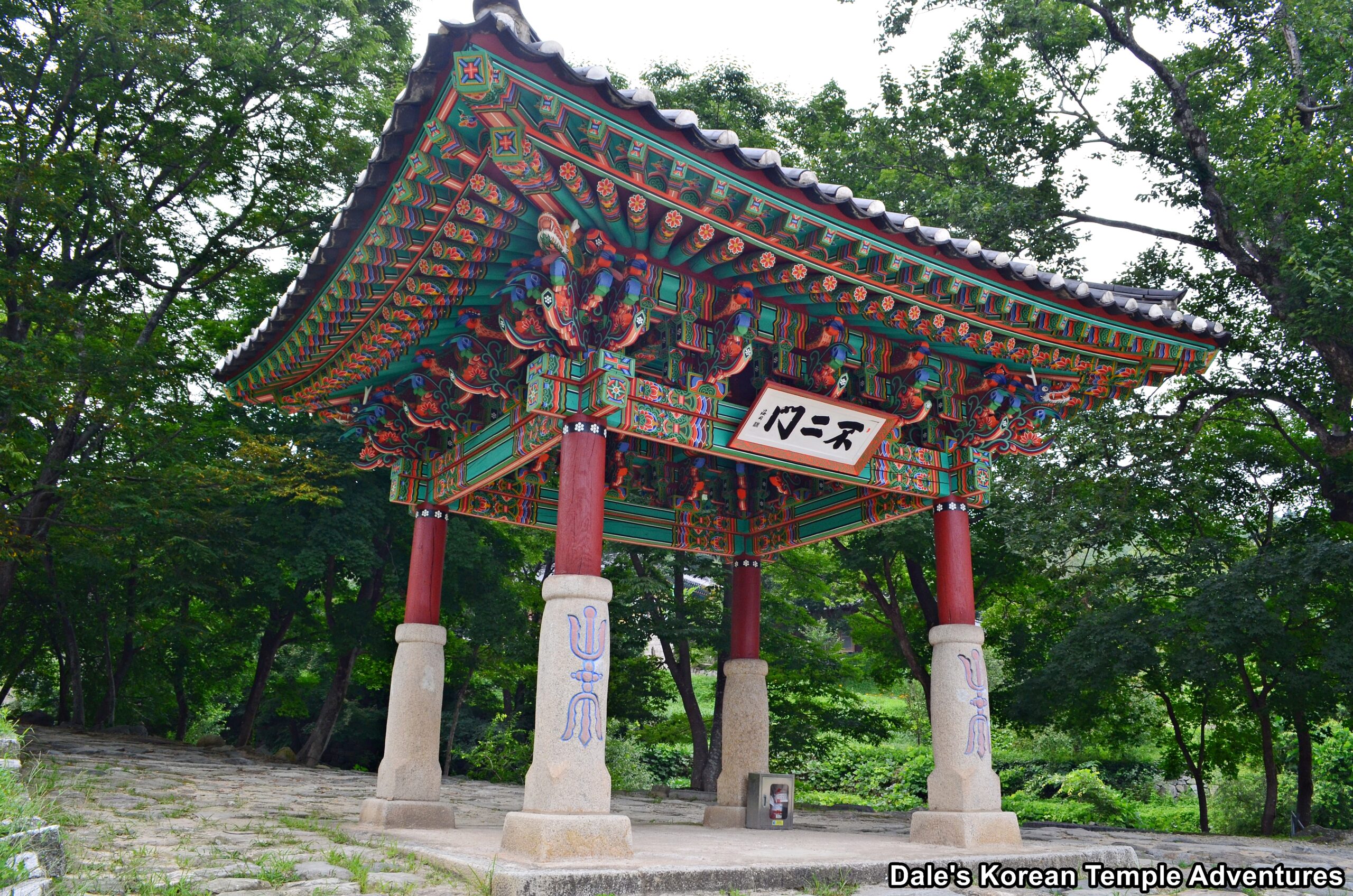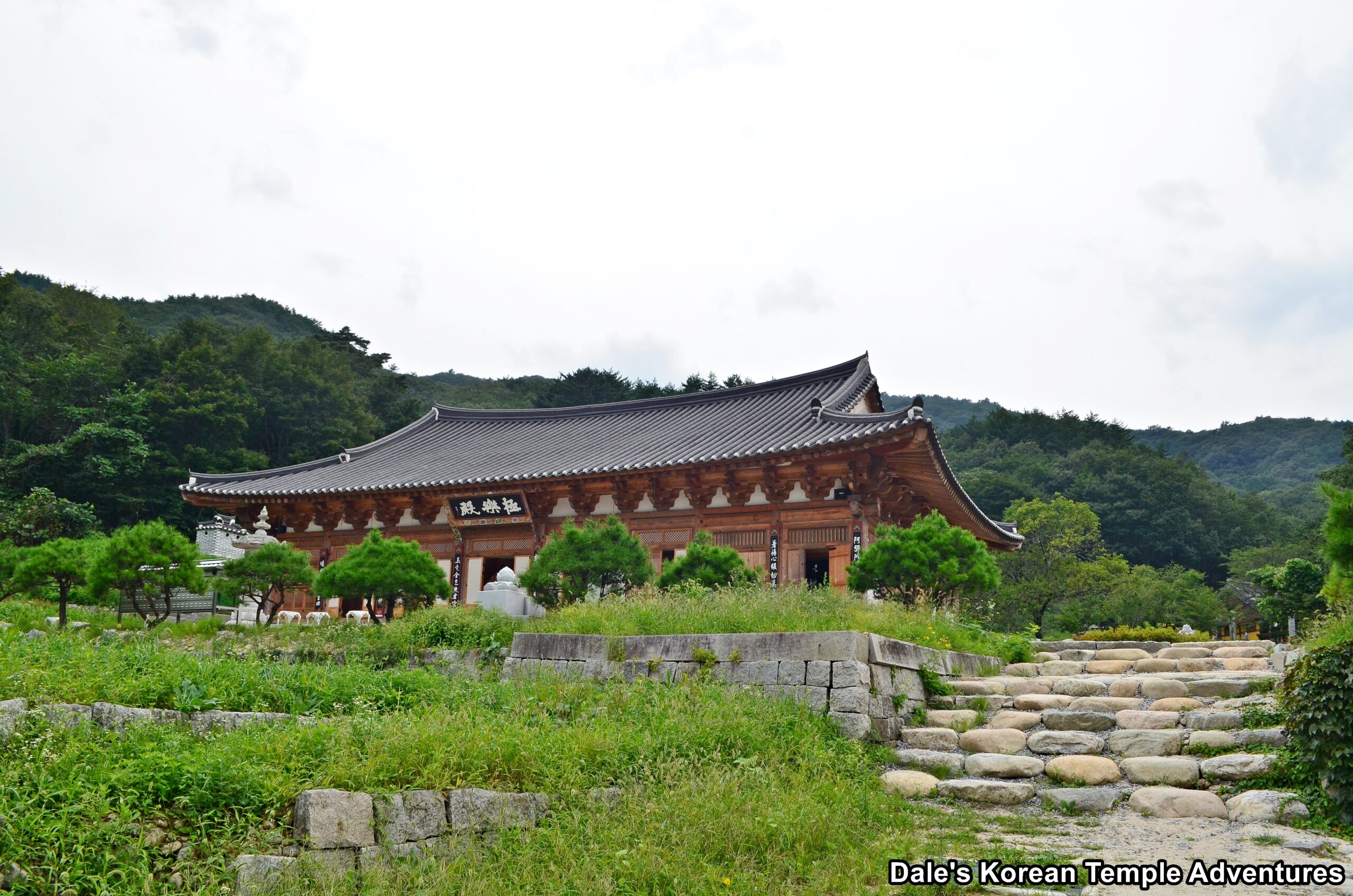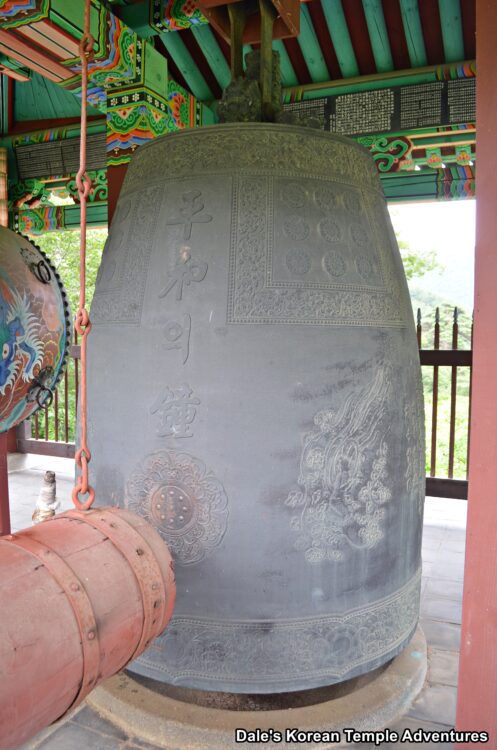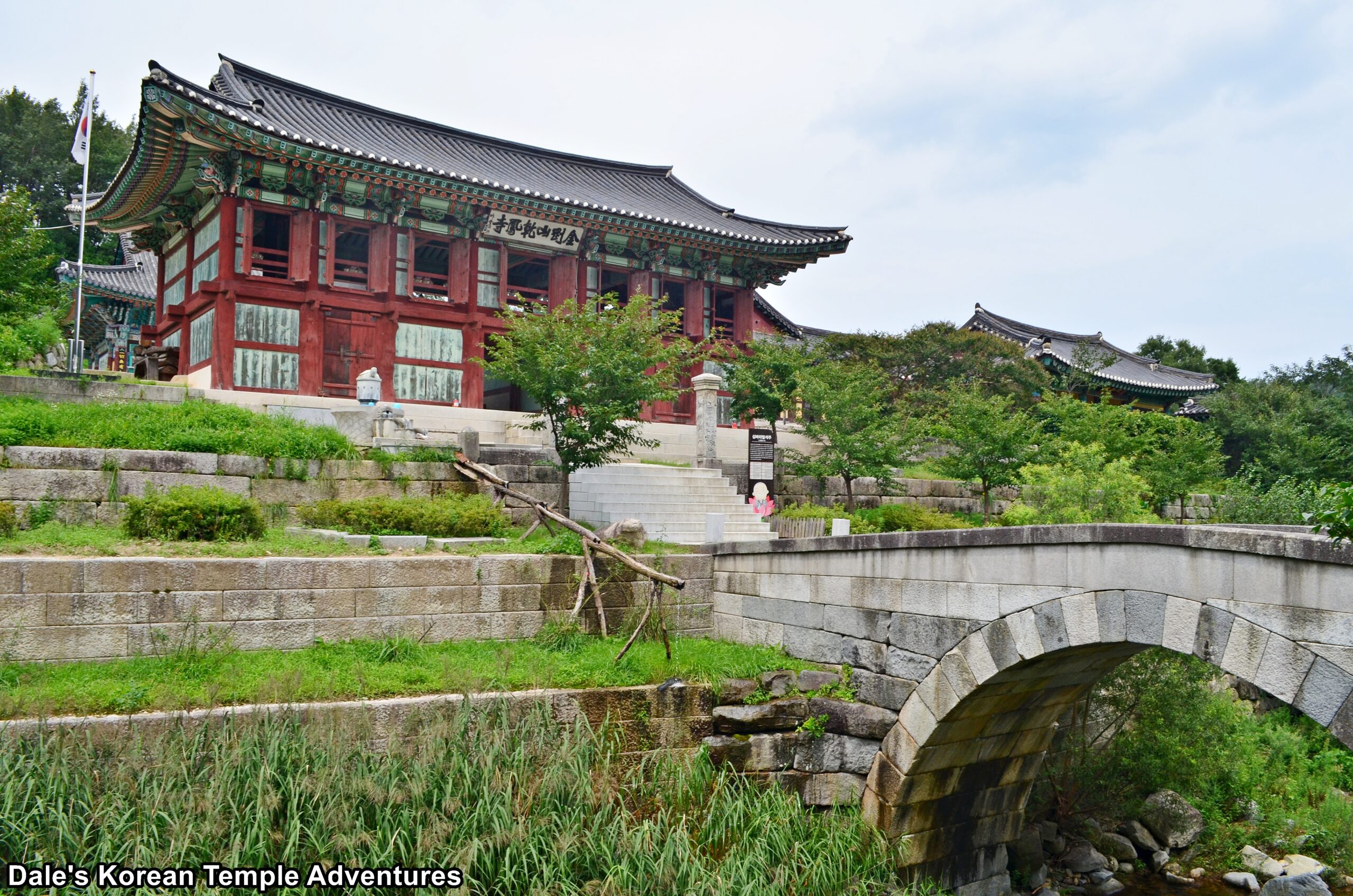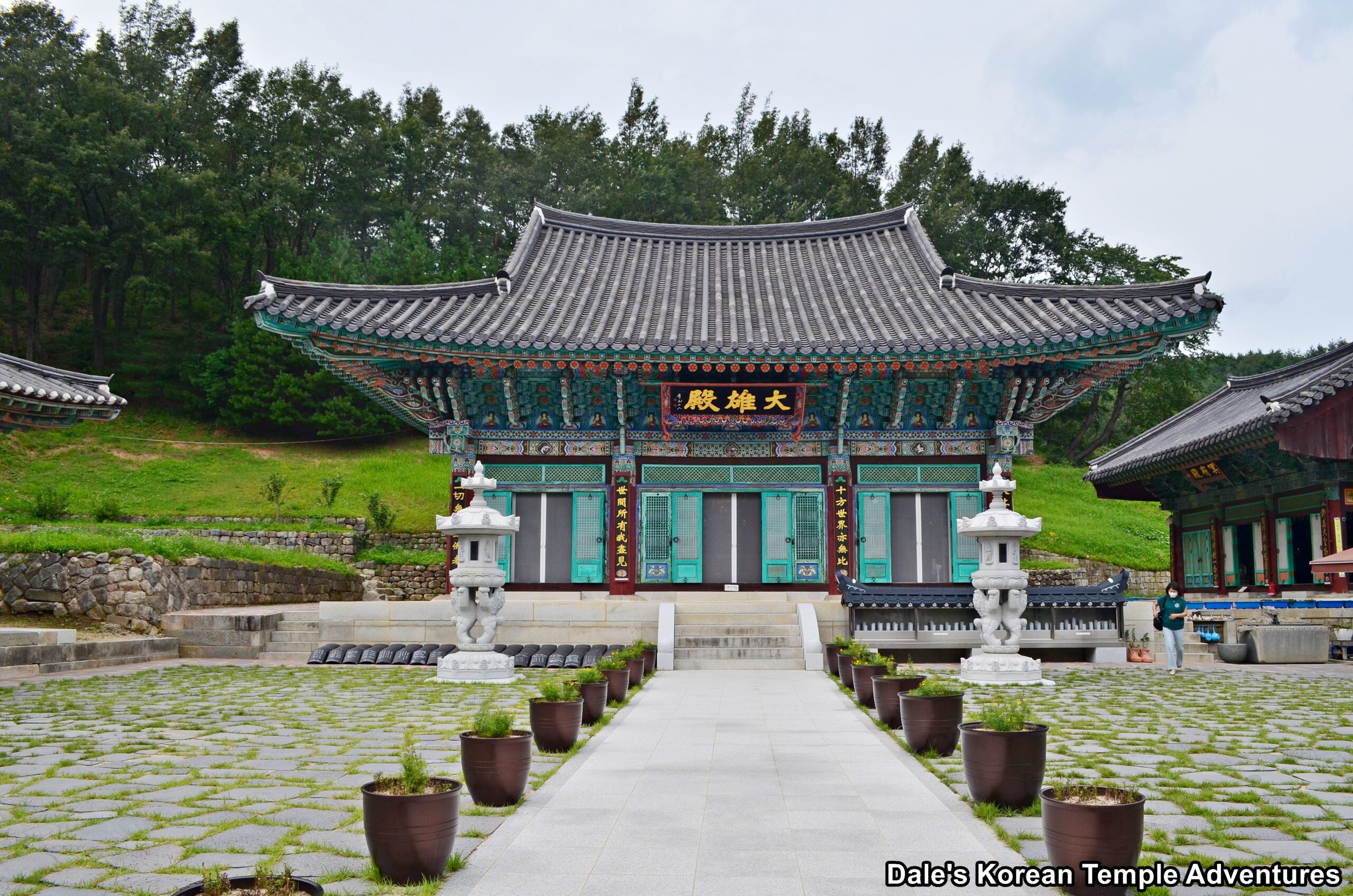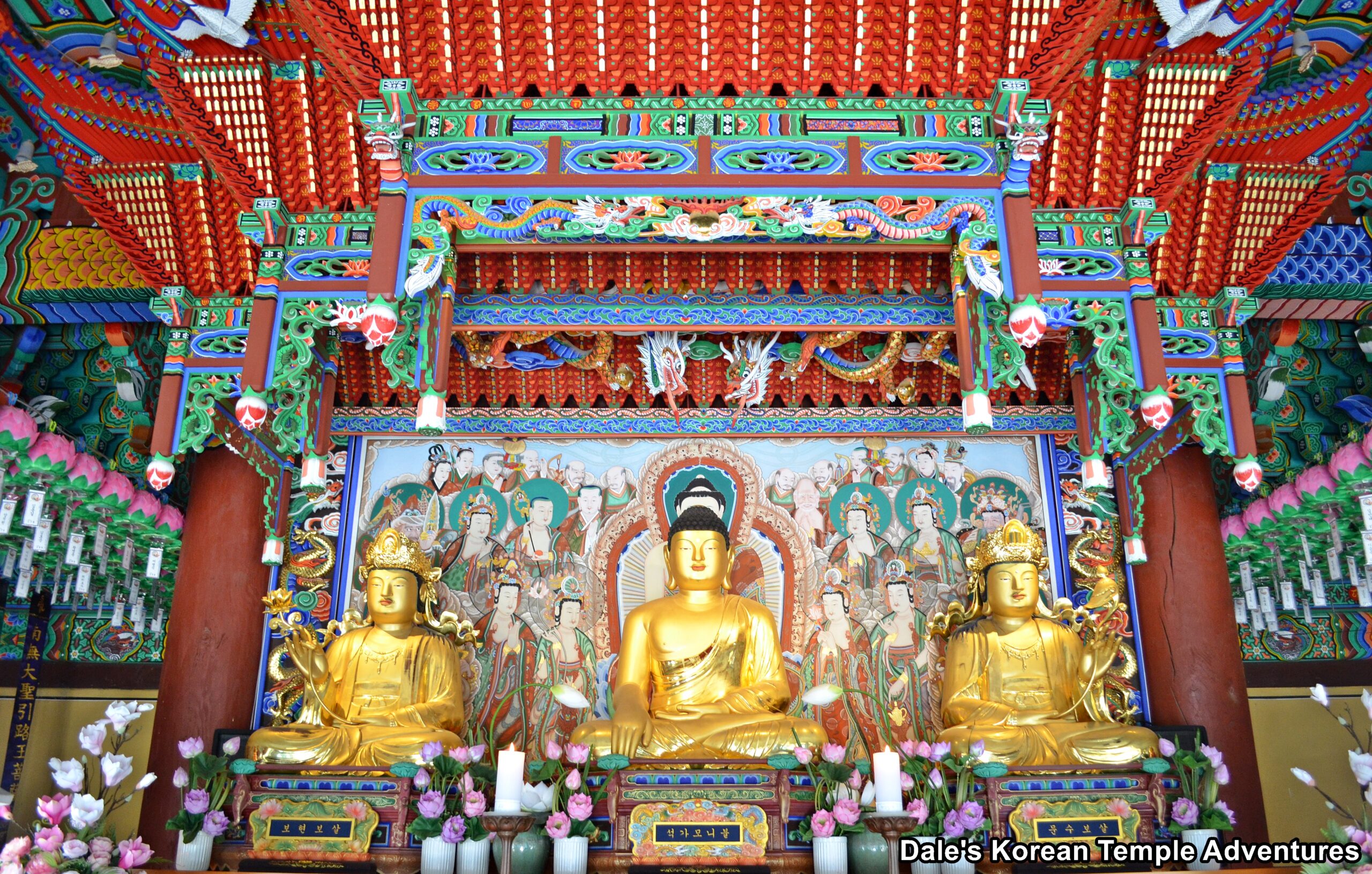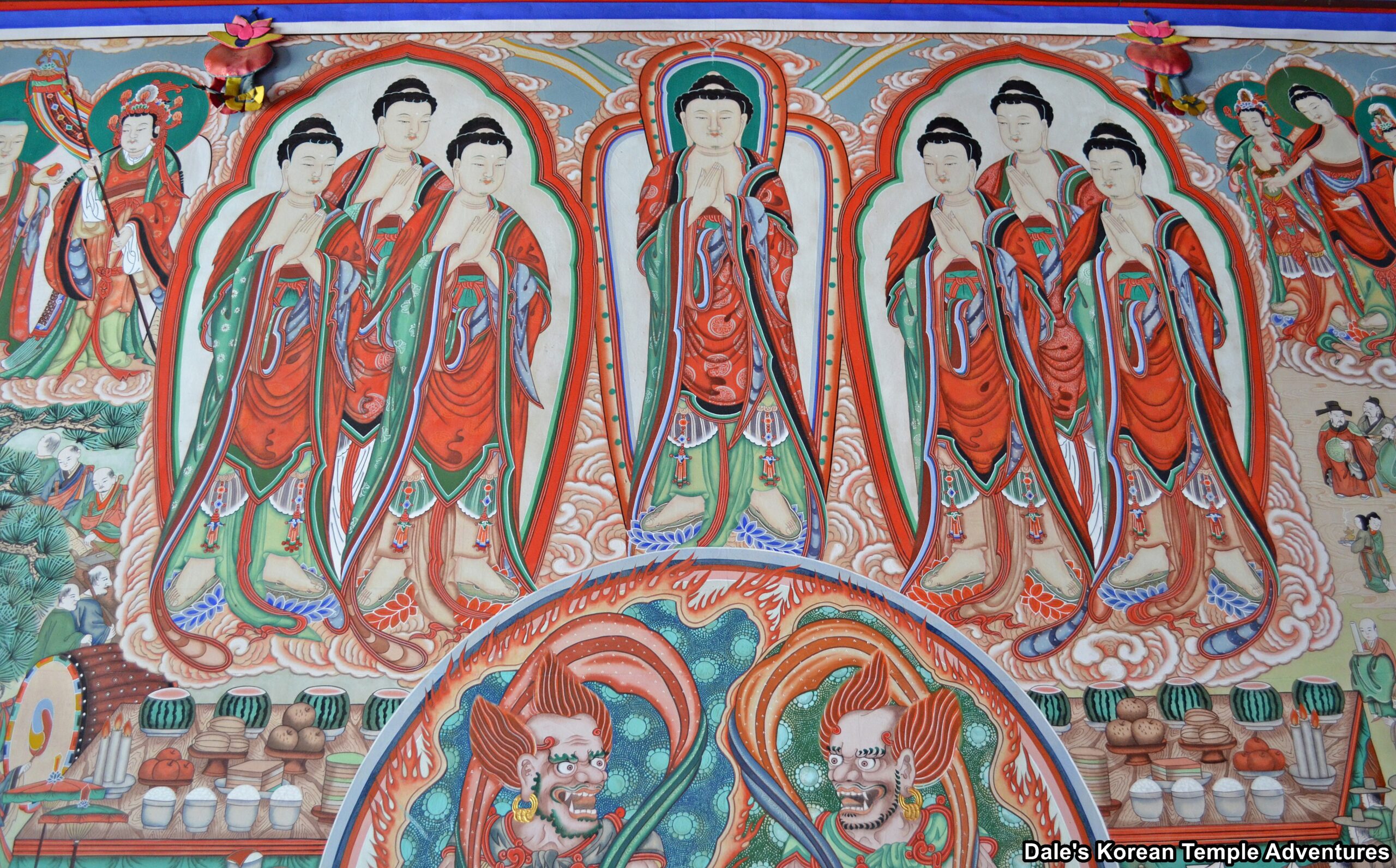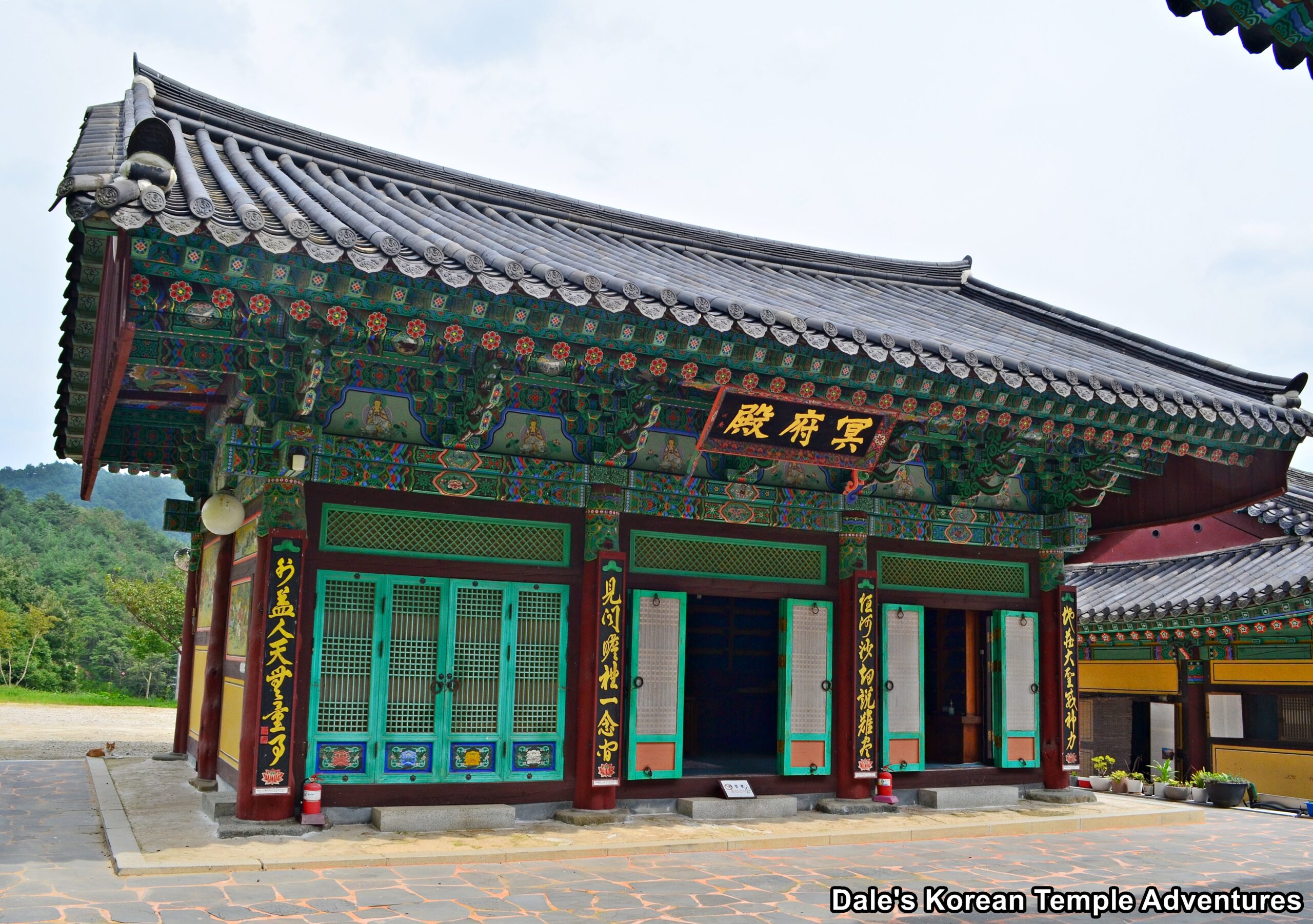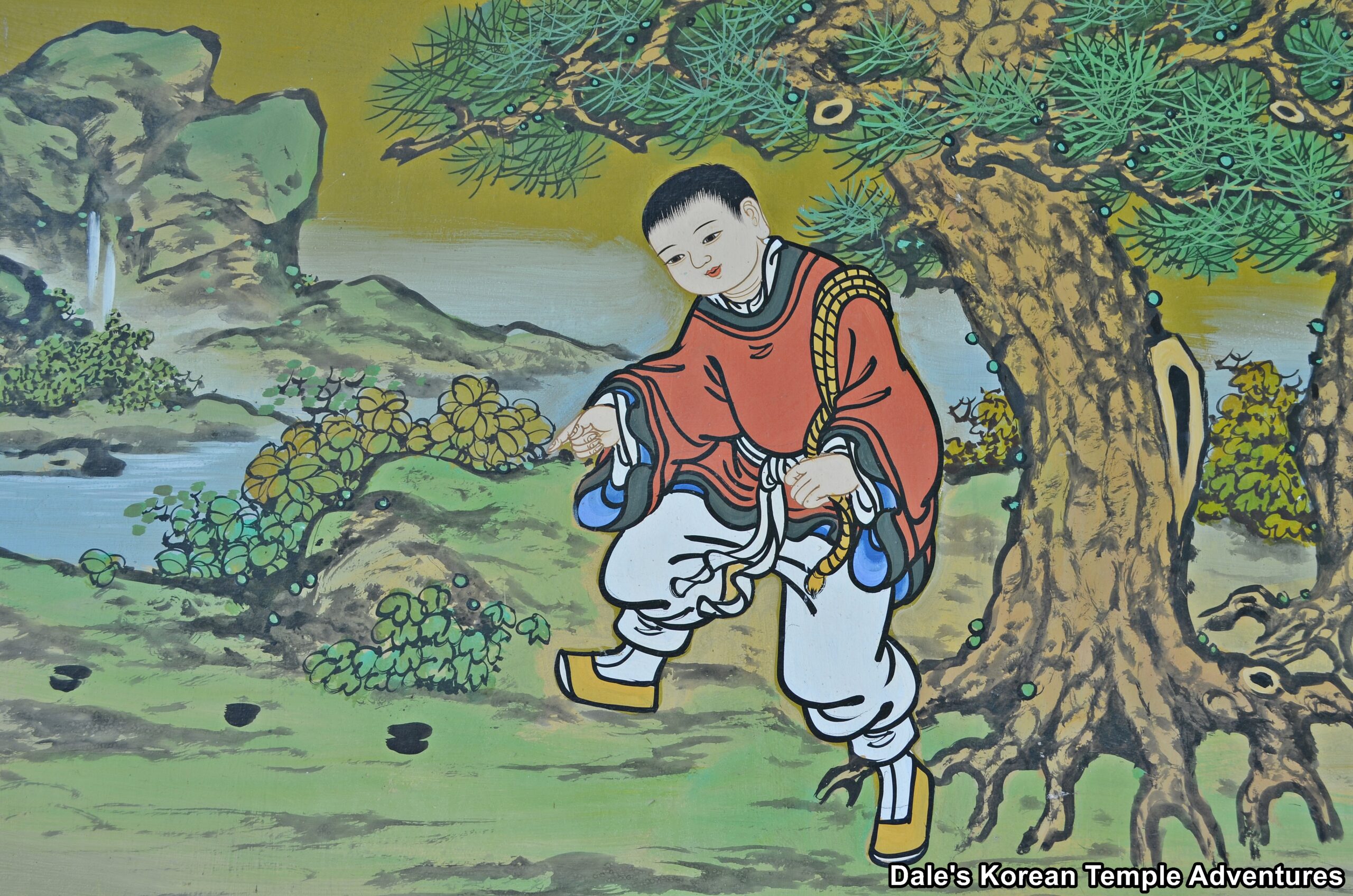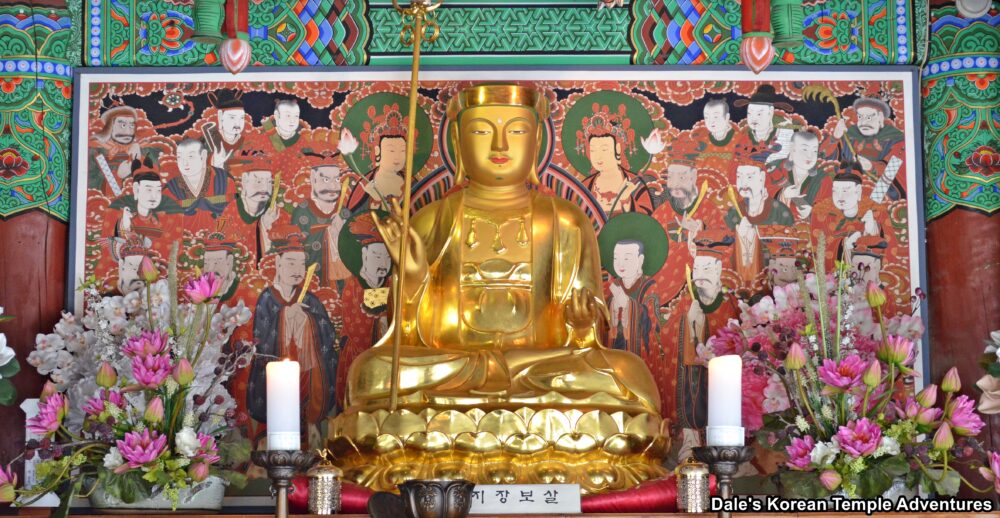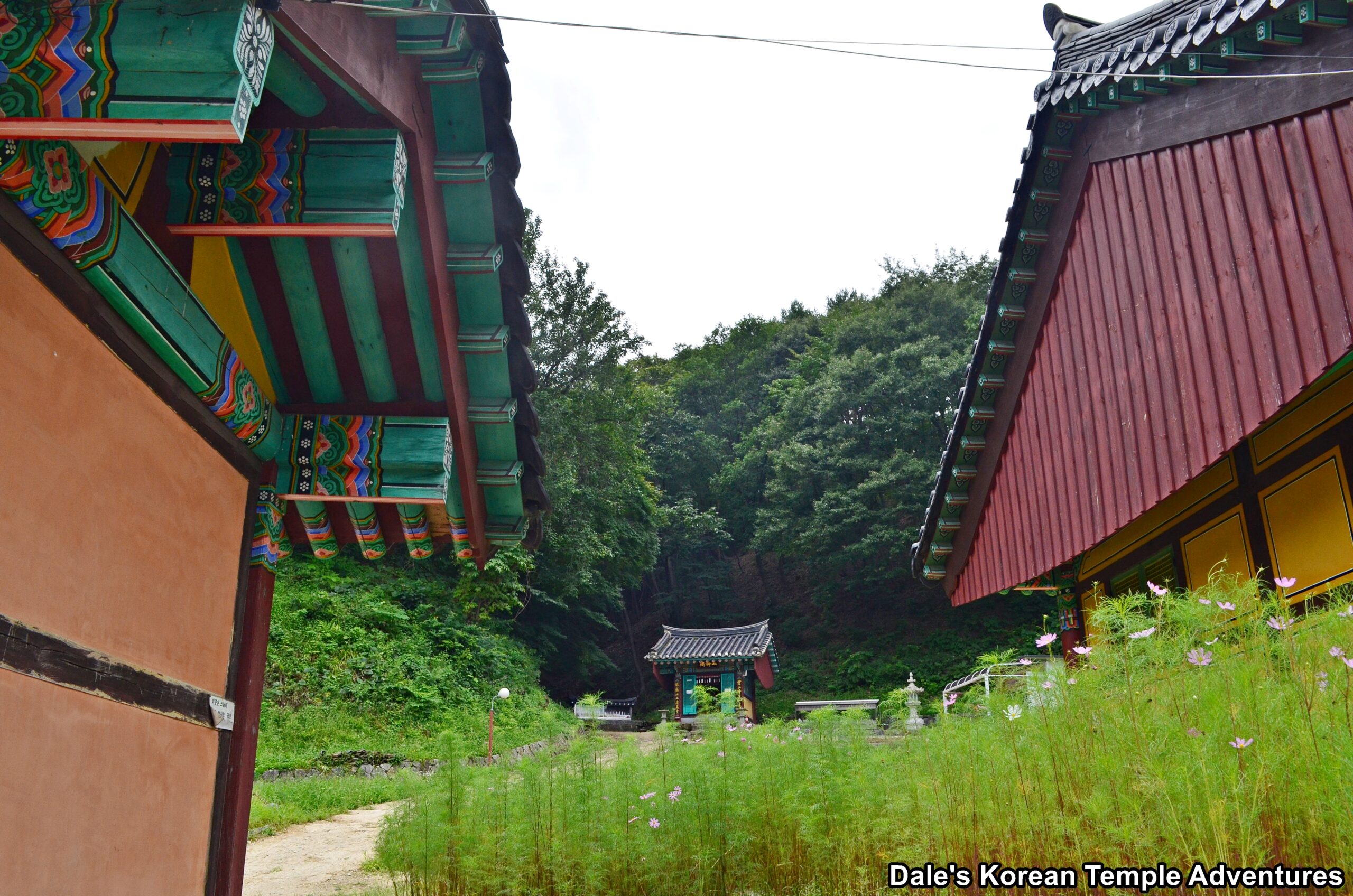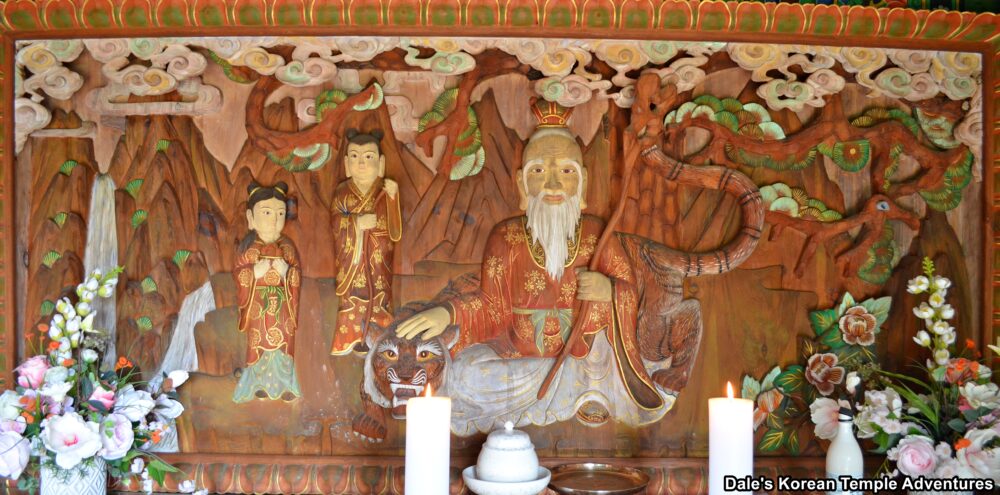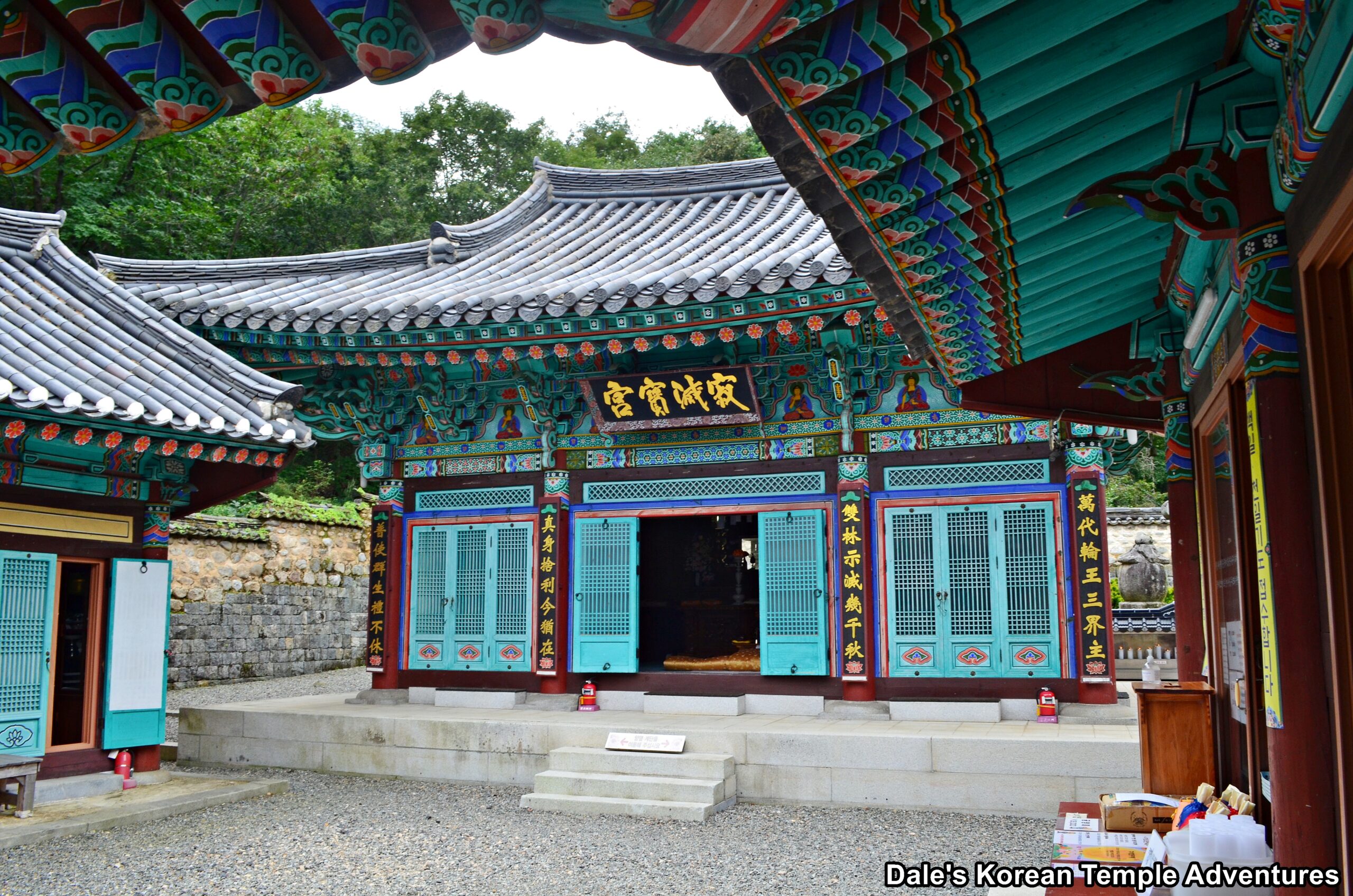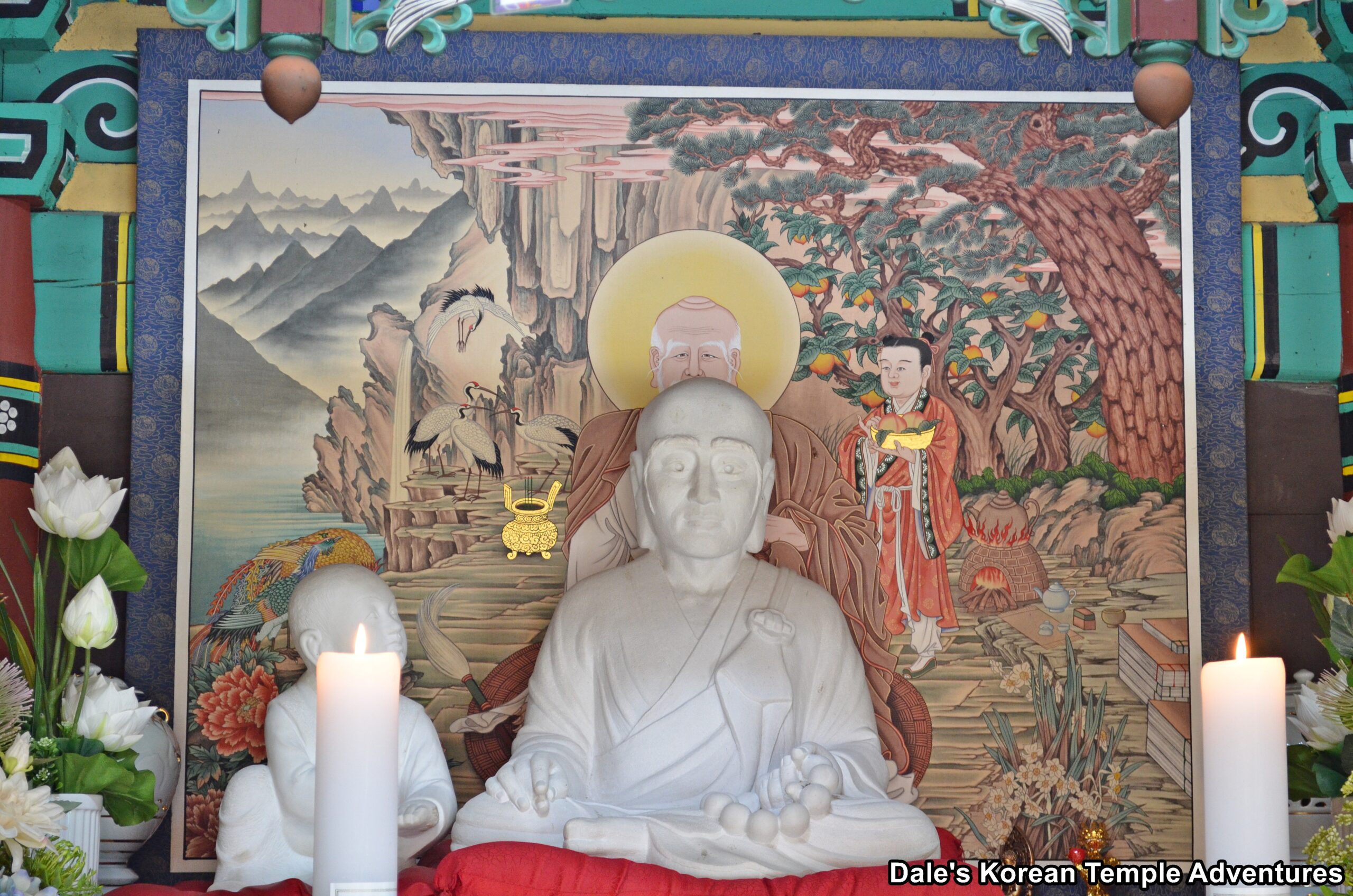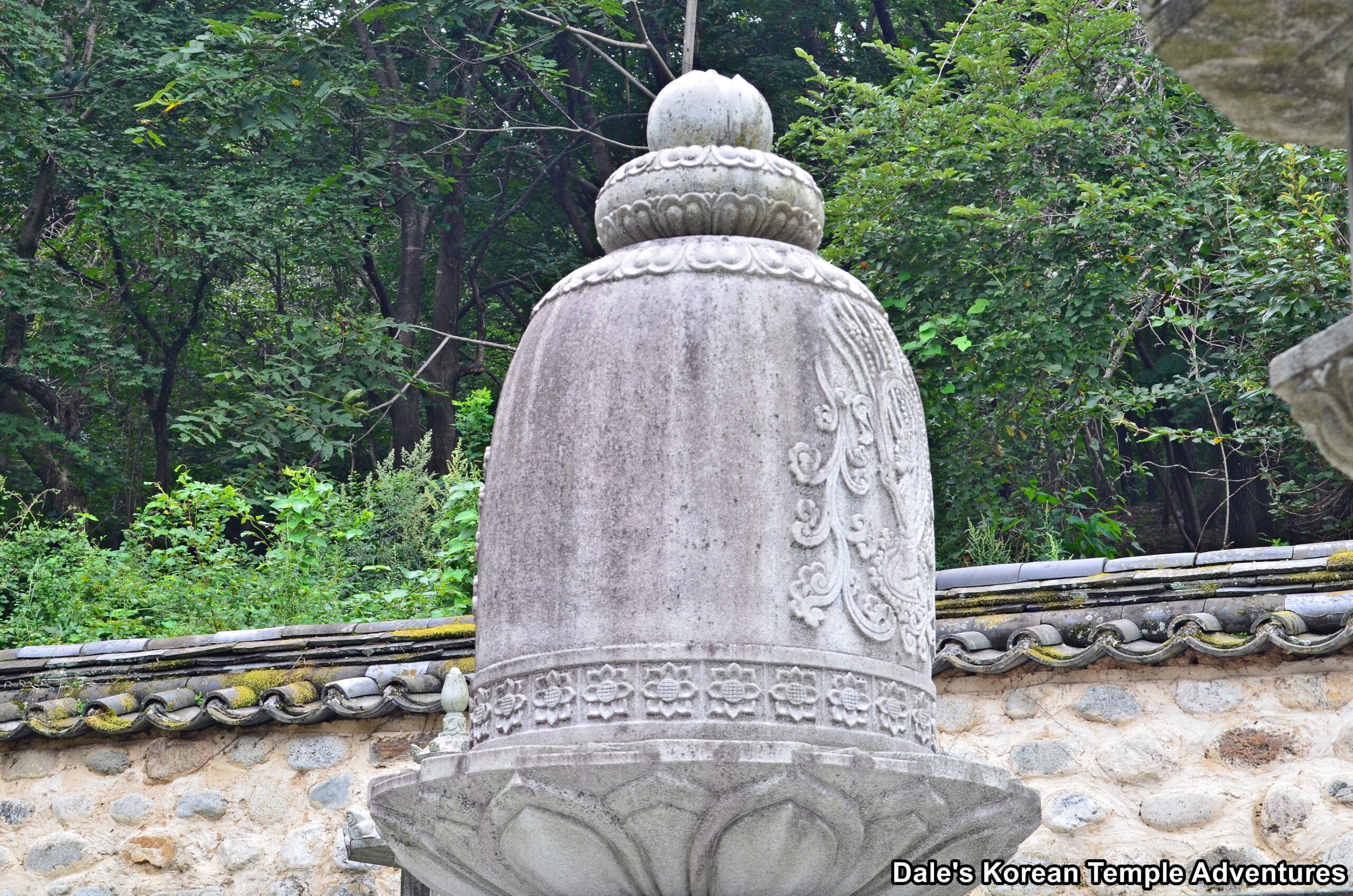Geonbongsa Temple – 건봉사 (Goseong, Gangwon-do)
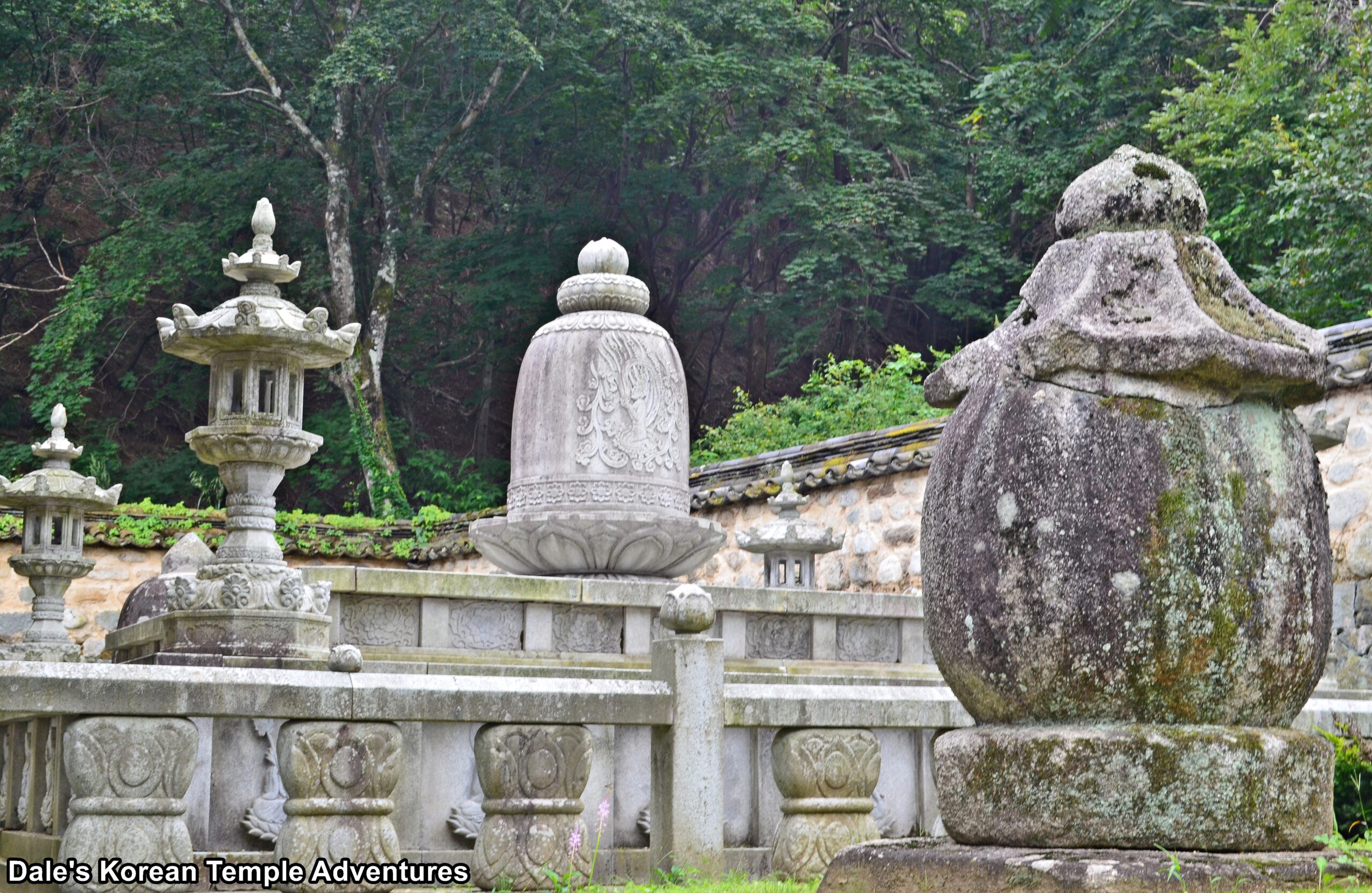
Temple History
Geonbongsa Temple is located in Goseong, Gangwon-do some 8 km from the DMZ. Geonbongsa Temple is part of the Mt. Geumgangsan (1,638 m) mountain range at its southern tip. Also, and of note, the DMZ divides the mountain range. The temple is also commonly referred to as Geumgangsan Geonbongsa Temple. Geonbongsa Temple was first founded in 520 A.D., and it was initially named Wongaksa Temple. The temple was then later rebuilt in 758 A.D. by the monk Baljing (?-785 A.D.). In fact, Baljing chanted Buddhist prayers for 10,000 days to be reborn in the Western Paradise, or Jeongto in Korean. Purportedly, this was the origin of this ceremony in Korea. Afterwards, Doseon-guksa (826-898 A.D.) rebuilt the temple, and he renamed it Seobongsa Temple. The reason for this change is that Doseon-guksa said that there was a phoenix-shaped rock on the west side of the temple grounds. Finally, in 1358, the temple was rebuilt, once more, this time by Naong Hyegeun (1320-1376) and renamed Geonbongsa Temple.
Later, and in 1456, King Sejo of Joseon (r. 1455-1468) visited Geonbongsa Temple, where he designated the temple as a place to hold prayers for the well-being of the royal family. King Sejo of Joseon then ordered the construction of the Eosil-gak to enshrine the spirit tablets of several generations of kings. As such, and with the support of the royal family, Geonbongsa Temple continued to prosper.
According to a temple sign at Geonbongsa Temple, the Buddha’s teeth sari, which are known as “chia sari” in Korean, were first brought to the Korean Peninsula by Jajang-yulsa (590-658 A.D.). Jajang-yulsa first went to Tang China (618 to 907 A.D.) in 636 A.D., where he visited a Munsu-bosal (The Bodhisattva of Wisdom) shrine on Mt. Wutai (3,061 m). From Tang China, Jajang-yulsa purportedly returned to the Silla Kingdom (57 B.C. – 935 A.D.) with 100 sari (crystallized remains) in 643 A.D. These sari were enshrined at 5 different temples: Tongdosa Temple, Woljeongsa Temple, Beopheungsa Temple, Jeongamsa Temple, and Bongjeongam Hermitage.
During the Imjin War (1592-98), the Japanese Army plundered and stole the sari from Tongdosa Temple. In 1605, Samyeong-daesa (1544-1610) went to Japan as an envoy to retrieve Korean prisoners of war and the sari once housed at Tongdosa Temple. Samyeong-daesa was still worried that these sari would be stolen once more, so he not only rebuilt the sari-tap at Tongdosa Temple, but he also had 12 of the Buddha’s teeth stored at Geonbongsa Temple inside a stone biseok, or “seokayeorae chisang-tap” in Korean in 1606. Then in 1724, a sari-tap was built at Geonbongsa Temple to store these “chia sari.”
In June, 1986, and because of treasure hunters/grave robbers, it was discovered that the “chia sari” were still housed inside the sari-tap at Geonbongsa Temple. However, it was at this time that Geonbongsa Temple was still inside the banned civilian area close to the DMZ. And because this area was off-limits to civilians, and it couldn’t be developed, the treasure hunters/grave robbers took advantage of this and stole the sari reliquary inside the Geonbongsa Temple sari-tap. However, and according to legend, the treasure hunters/grave robbers were continuously visited by the Buddha in nightmares. They were beseeched to return the “chia sari” to the temple. Eventually, they would return them to Geonbongsa Temple; however, only 8 of the 12 remained. Later, 3 of the 8 were housed inside the Jeokmyeol-bogung at Geonbongsa Temple. The remaining 5 are now housed, as of January, 2022, inside the temple museum, the Boanwon, at Geonbongsa Temple, for the general public to see.
Between 1704 to 1707, the Neungpa-gyo Bridge was built at Geonbongsa Temple to link the Daeung-jeon Hall courtyard with the Geukrak-jeon Hall courtyard. The Neungpa-gyo Bridge is the only Korean Treasure at Geonbongsa Temple, and it’s Korean Treasure #1336. It was also at this time, in 1724, that a nine-story sari-tap (pagoda for the crystallized remains of the Buddha) was erected at Geonbongsa Temple.
Sadly, and on April 3rd, 1878, a forest fire broke out around Geonbongsa Temple. It destroyed a large portion of the temple. However, the main altar statues were saved from the Palsang-jeon Hall. In 1911, and in accordance with the Joseon Temple Ordinance enacted by the Japanese, Geonbongsa Temple became one of the thirty main administrative temple headquarters in Korea. And Geonbongsa Temple was specifically in charge of nine other temples.
During the Korean War (1950-53), there was extensive fighting around Geonbongsa Temple conducted by the U.S. Army and the North Korean forces for nearly two years. It was at this time that most of the temple was destroyed. In fact, and not until 1989, Geonbongsa Temple was off-limits to civilians because of its close proximity to the DMZ and the Civilian Control Line. It was only during Buddha’s Birthday, one day of the year, that visitors could visit Geonbongsa Temple at this time. However, and since 1994, the temple has slowly been restored.
Outside the Neungpa-gyo Bridge, which is the temple’s only Korean Treasure, the temple site was designated a historic site in Gangwon-do in 1982. Also, the Bulimun Gate, which was the only wooden structure not destroyed at the temple during the Korean War, was designated a Gangwon-do Cultural Heritage Material in 1984. And the area surrounding Geonbongsa Temple is considered a Natural Monument.
Temple Layout
Geonbongsa Temple is, rather interestingly, divided into three sections. The first structure to greet you at the temple is the Bulimun Gate that was first constructed in 1920. This gate, which is known as the Non-Duality Gate in English, is somewhat constructed like an Iljumun Gate. The major difference, besides its meaning, is that this entry gate is supported by four pillars on each of the four corners of the structure.
To the left of the Bulimun Gate, and somewhat up the embankment, is the Geukrak-jeon Hall courtyard. You can still see the foundational stones to the former shrine halls to the south of the newly rebuilt Geukrak-jeon Hall. It’s to the left of these foundational stones that you find the Jong-ru Pavilion at Geonbongsa Temple. Housed inside the temple bell pavilion are the four traditional Buddhist percussion instruments. The main feature of this courtyard, however, is the unpainted, and newly constructed, Geukrak-jeon Hall. This large temple shrine hall, while still lacking the dancheong exterior colours, houses a beautiful main altar triad of statues centred by Amita-bul (The Buddha of the Western Paradise). The interior of the Geukrak-jeon Hall is populated by statuettes of Amita-bul lining the interior. And to the left of the main altar is a memorial shrine for the dead.
To the right of the Bulimun Gate, on the other hand, is the Daeung-jeon Hall courtyard. You’ll need to cross over the historic, and rather simple, Neungpa-gyo Bridge to gain access to the main temple courtyard. You’ll first need to pass under the Geumgangsan Bongseo-ru Pavilion to gain access to the main temple courtyard. Housed inside this entry pavilion are a beautiful collection of historic pictures both of Geonbongsa Temple and other Mt. Geumgangsan temples. It’s also from inside the Geumgangsan Bongseo-ru Pavilion that you get a nice view of the Geukrak-jeon Hall courtyard and the Neungpa-gyo Bridge.
As for the Daeung-jeon Hall, it is fronted by two newly built seokdeung (stone lanterns) with lion-bases. The exterior walls of the Daeung-jeon Hall are adorned with various murals dedicated to various Buddhas like Birojana-bul (The Buddha of Cosmic Energy) and Seokgamoni-bul (The Historical Buddha). Stepping inside the Daeung-jeon Hall, and resting on the main altar, are three statues. The central image is that of Seokgamoni-bul, who is joined on either side by Munsu-bosal (The Bodhisattva of Wisdom) and Bohyeon-bosal (The Bodhisattva of Power). All three of which are placed under a large, ornate, red canopy. To the right of the main altar is a large Shinjung Taenghwa (Guardian Mural), while to the left is an intricate Gamno-do (Sweet Dew Mural). This mural is joined out in front by a Banya Yongseon-do (Dragon Ship of Wisdom) sculpture.
To the right of the Daeung-jeon Hall is the Myeongbu-jeon Hall. This temple shrine hall is adorned with some of the nicer Shimu-do (Ox-Herding Murals) in Korea. And stepping inside the Myeongbu-jeon Hall is a golden image of Jijang-bosal (The Bodhisattva of the Afterlife) on the main altar.
The final temple courtyard at Geonbongsa Temple is to the rear of the Geukrak-jeon Hall and Daeung-jeon Hall courtyards. Having crossed over a bridge spanning a lotus pond, and passing by an image of Podae-hwasang (The Hempen Bag), you’ll find a long building that houses the Temple Stay program at Geonbongsa Temple. To the rear of this building is a diminutive Sanshin-gak Hall. Housed inside this shaman shrine hall is a beautiful wooden relief dedicated to Sanshin (The Mountain Spirit).
It’s to the right of the Sanshin-gak Hall, and up a pathway, that you’ll find the Jeokmyeol-bogung. Through a narrow entryway, and past an administrative office, is the beautiful shrine hall that looks out onto the compact Jeokmyeol-bogung. This temple shrine hall is surrounded by vibrant Palsang-do (The Eight Scenes from the Buddha’s Life). Stepping inside this temple shrine hall, and similar to the Daeung-jeon Hall window that looks out onto the Geumgang Gyedan at Tongdosa Temple, is a window that looks out onto the stone altar that houses the stone lotus bud that houses three “chia sari”. And to get a better look at the altar that houses this stone lotus bud, and instead of entering the aforementioned shrine hall, you can simply pass to the right or the left of the shrine hall. The stone lotus bud that houses the “chia sari” is reminiscent of the one found at Tongdosa Temple. It’s fronted by two seokdeung (stone lanterns) and surrounded by stone railings. There is also a stone door that’s closed and adorned with reliefs of guardians and swirling dragons. And to the right and left of this stone altar are a collection of stupas and stele.
One other building in this area is the Dokseong-gak Hall to the right of the shrine hall that looks out onto the stone altar that houses the “chia sari.” The exterior walls to the Dokseong-gak Hall are adorned with beautiful floral murals. And housed inside the Dokseong-gak Hall is a mural and statue on the main altar dedicated to Dokseong (The Lonely Saint).
How To Get There
There’s no bus that directly goes to Geonbongsa Temple. Instead, you’ll need to take a taxi to get to the temple. You can do this from Goseong, Gangwon-do; and more specifically, the Ganseong Bus Terminal – 간성버스터미널. The taxi ride will take 15 minutes over 10 km, and it’ll cost you around 16,000 won (one way).
Overall Rating: 9/10
The one major drawback to Geonbongsa Temple is that almost everything is newly built at the temple. However, with that being said, what has been rebuilt is beautiful and builds-off the temple’s long history. The main highlight, rather obviously, is the Jeokmyeol-bogung to the rear of the temple grounds at Geonbongsa Temple. The temple really has done a beautiful job presenting the remains of the Buddha, Seokgamoni-bul. In addition to the Jeokmyeol-bogung, there are numerous shrines and shrine halls at Geonbongsa Temple like the Daeung-jeon Hall, the Geukrak-jeon Hall, and the Geumgangsan Bongseo-ru Pavilion. The architecture and the artwork blend in beautifully to the countryside at Geonbongsa Temple.
